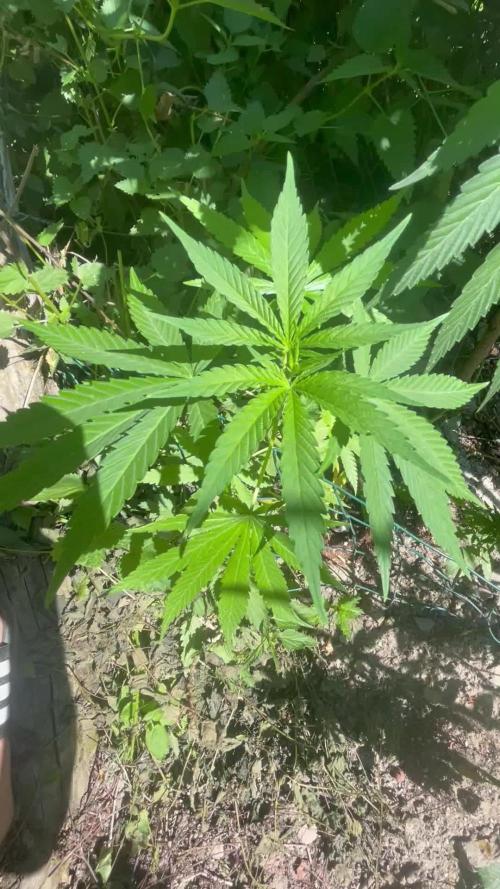The Grow Awards 2026 🏆 





























Likes
7
Share


@Totogrowuk
Follow
Had one week of flush and I think I’ll give her a few more days and then harvest.
Been a really easy grow and a pleasure to watch. Can’t wait to try the beautiful buds.
Likes
16
Share


@Chubbs
Follow
What up fam, weekly update on these gorgeous girls. They're showing preflowers now which I'm definitely happy as that means the stretch is almost over. I did add a 2nd scrog net its 6ft high. Over all I couldn't be happier with how they've grown. Happy Growing.
Likes
33
Share


@ThrashedTV_BakedByGlaze
Follow
I'm starting to suspect that the larger Cali Snow in the middle is ACTUALLY the LSD-25 seed from my other diary right now..
When I germinated them I put them separated but on the same cloth. At one point the LSD rolled over into the Cali Snow seeds but I was PRETTY sure I knew which one it was. Looking at how the two seedlings are similar in their stunted growth compared to the big buy in the middle who's right on schedule. I think THAT might be the real LSD-25 but I might have to wait a few weeks before I figure it out 😂
You can see it's definitely struggling but it is still growing along. Let me know if you know what is going on with it!
Still just using a spray bottle for the soil around the plants using plain water a couple times a day. I will start a light water Molasses/Water feeding starting next week most likely.
DAY 19 - 11/17:
Just got back from a day or so out of town. Left them well watered with their domes on to help with moisture loss. Left the Veg half of my LED on so not full power but still a great bit of progress when I got back today.
The next node of Plant 1 is out and the struggling Plant 2 hit it's first node and regular growth has taken over. Will give them a dark period tonight to give them a break from the 36 or so hours of light they've had when I was away.
Still just letting the FoxFarms Ocean Floor do the feeding with plain waterings with a spray bottle. Will start to feed the soil Molasses/Water mixes by the end of the week or as soon as I feel the little plants and handle a pour feed compared to gentle spray.
Thanks for stopping by! Like, Follow, and I follow back on IG: @GlazedGrow 💪
Likes
3
Share


@Happydays58
Follow
10/02 - DAY 69
- Staying on course. Aromas are getting strong even with the exhaust & filter running 24/7.
- Mo is still drinking 2 Gal every ~36hrs. All buds are getting their purple on without low night temps.
Likes
4
Share


@CannaIGrow
Follow
This plant plus one more started to wilt earlier on in the week, I figured it was probably time to transplant seeing as they had been in the solo cups for 2 weeks. After transplant plants seemed to be happy again. I introduced amino acids this week as well. They are getting the grease spray and drench program
Likes
8
Share


@DrGreenbutterThumb
Follow
This week transplanted all new soon to be Mother plants to 5 gallon fabric pot, the topped plant responded well and is 8 inches, tied down to 7 to open her up, and the heavy rooted runt of the bunch is 6 inches,
Likes
Comments
Share


@Nobody1991
Follow
It is a vigorous plant with very uniform branching, high resinous and high yield, if you grow from seed there are a few different phenos that I got, equally as good
Likes
4
Share


@DankieDoodle
Follow
DankieDoodle 📅 Vegetative – Week 3, Days 1–7
✂️ Topping & Transition Week
This week marked an important step in shaping the structure all three girls, Pure Runtz (T.H.Seeds), Strawberry Poprocks (Anesia Seeds), and Radical Juice (Ripper Seeds), were topped cleanly above the 4th node to begin forming their SCROG-ready main frame.
All cuts healed fast, and the plants responded perfectly zero stress, vibrant color, and compact, even growth.
💧 Watering & Feeding
Day 1: Each plant received 1 L of water, following the regular schedule.
Absorption was perfect no runoff, great structure, and a healthy, active root zone.
Water Mix:
RootJuice — 1 ml/L
Biobizz Heaven — 2 ml/L
Epsom Salt — 0.15 g/L
pH — natural (7.4 tap water)
💡 Environment:
Temp: 25 °C
RH: 68–70 %
PPFD: ~550 µmol/m²/s (Mars Hydro FC4000 EVO @ 50 %)
Cycle: 18/6
VPD: ~1.0 kPa
🌿 Midweek (Day 4)
All three plants were watered again with 1 L each, using the same nutrient mix.
Substrate dried evenly, roots are expanding rapidly, and all three show symmetrical, low-stress growth.
🌞 End of Week (Day 7)
By Day 7, the pots were drying out completely after only two days a clear sign of a well-developed root system.
The Autopots were activated today to let the plants get used to consistent moisture levels before the next growth stage.
🚀 Radical Juice (Ripper Seeds) Note:
Between Day 5 and Day 7, she showed explosive vertical growth, pushing herself right into 650 µmol/m²/s PPFD resulting in slight tip burn on the top leaves.
Nothing serious, just a light stress mark from her incredible vigor.
The light intensity has since been adjusted down to 550 µmol/m²/s for all plants to maintain perfect balance and canopy health.
🌱 Summary:
Structure after topping looks perfect four strong mains on each.
All three cultivars are balanced, compact, and healthy.
Radical Juice shows top-tier growth potential; all plants are ready for the next phase.
A clean and productive week steady growth, solid recovery, and the Autopots now active to keep the rhythm flowing.
Next step: another topping and the first round of gentle LST to open up the canopy evenly 🌿✨
Likes
20
Share


@adam_pawloski87
Follow
We are in Flush !! Was giving them GH Flora series + rapid start + cal mag
Likes
10
Share


@3lementa1
Follow
I was still seeing strange things happen in the leaves but runoff pH was staying at around 6.5. One plant toppled over and started growing up from a bent stalk like an herb. I started looking for a new reflector so that I could mount my light horizontally instead of vertically to save space and ideally find a way to get the plants closer to the light without burning them. I started looking into MH bulbs as well as I figured at this point I clearly hadn't provided the light they needed. If I wanted them to thrive I needed to set them up properly for the last few weeks of veg. I transplanted this week into slightly bigger coco pots but in retrospect I feel I should have gone up to 3 gallon pots at this point.
Likes
15
Share


@Dunk_Junk
Follow
Flowering stretch slowing down. Only 4cm this week.
Flowers are progressing, more white hairs.
Likes
2
Share


@Passionatos
Follow
The plants are very healthy I am running the low feeding chart from Terra aquatica at the moment. Ec is 0,9 ph 5,8
Likes
11
Share


@samuraifroggig
Follow
Might be experiencing some nute lockout I'll dial back the nutes even more to flush, flush, feed. Watering daily, the medium drys out almost completely every 26hrs and then she wilts. Lots of air flow in this setup with a fiber pot so just trying to keep it wet really. 1000w HPS is amazing in this small of space I could get 2 or three plants in here next time.
Likes
3
Share


@Jahrulez
Follow
END OF WEEK 1
Gyals lookin Fine AF. Startet to give sum Bio Grow now.. everything loookin fine with the Pinot.. Love her already
Not much happening in the first/2nd week.... honestly hate this stage cuz its fkin boring. xD
Likes
36
Share


@GeorgeMaas
Follow
Last week was pretty stable. The buds are steadily fattening up, just how we like it. They all got burned leave tips, I think it has to do with too little runoff, because I’m using GHE’s flora hydro schedule on exactly half strength. Its not getting worse over the last days so its probably not a big deal.
Like I said last week, I have a dehumidifier now. I got it hooked up to one of the air holes on the bottom. My sonoff temperature and humidity sensor checks when it goes over 65% rh, and fires on the dehumidifier whenever needed to blow difrectly in the tent. I do wonder if I could save on electricity to get a stronger exhaust fan. Because the humidity outside the tent is low enough, so more air circulation could fix the humidity issue without actively dehumidifying I think.
I’ve been eyeing on the Apogee SQ-102 PAR meter. Its not perfect for led light but it does give a pretty good idea about the amount of light hitting the plants. I’d like to get a better idea of the optimal distance between plants and light. Especially since i ran into loads of light burn issues in this grow and past grows.


























